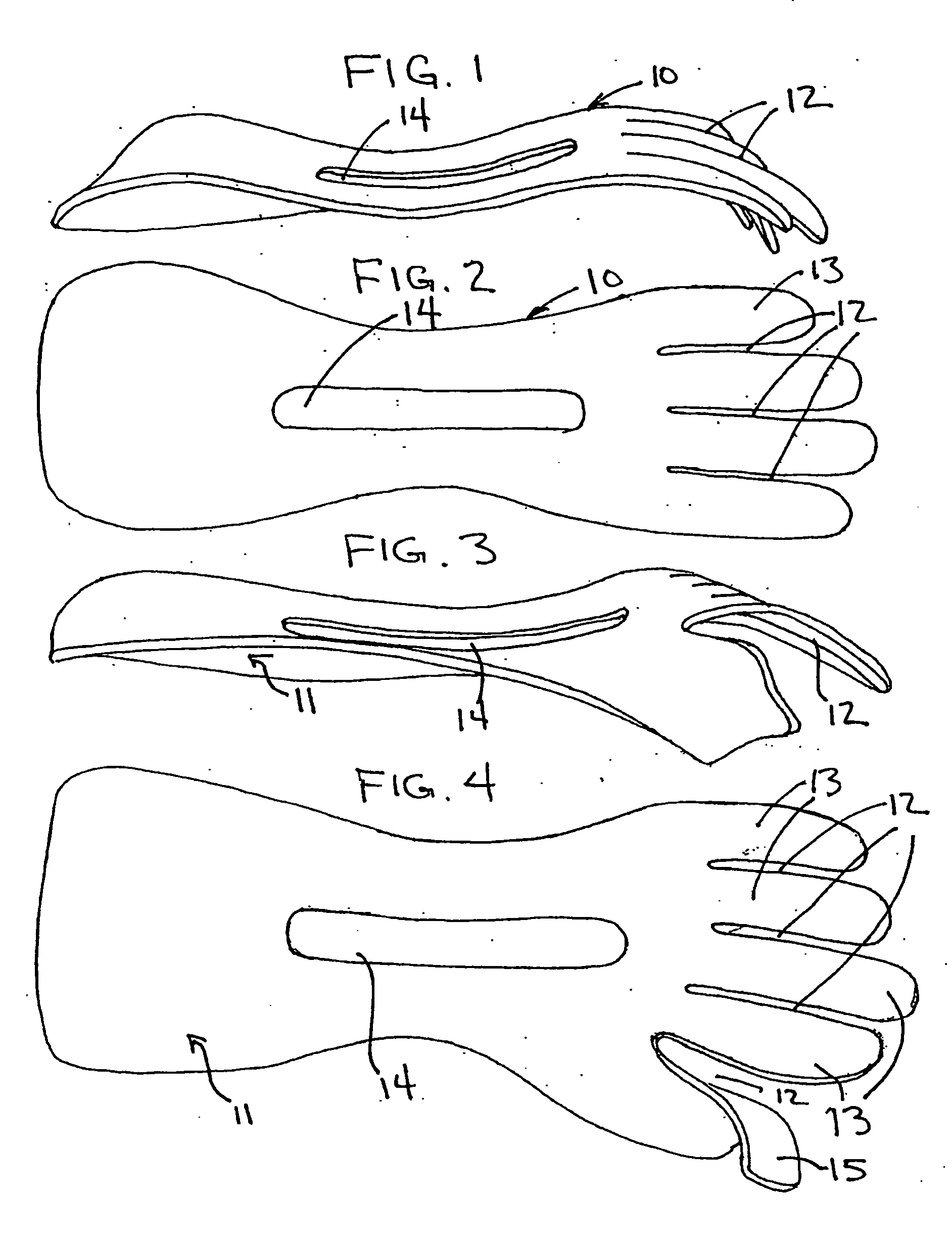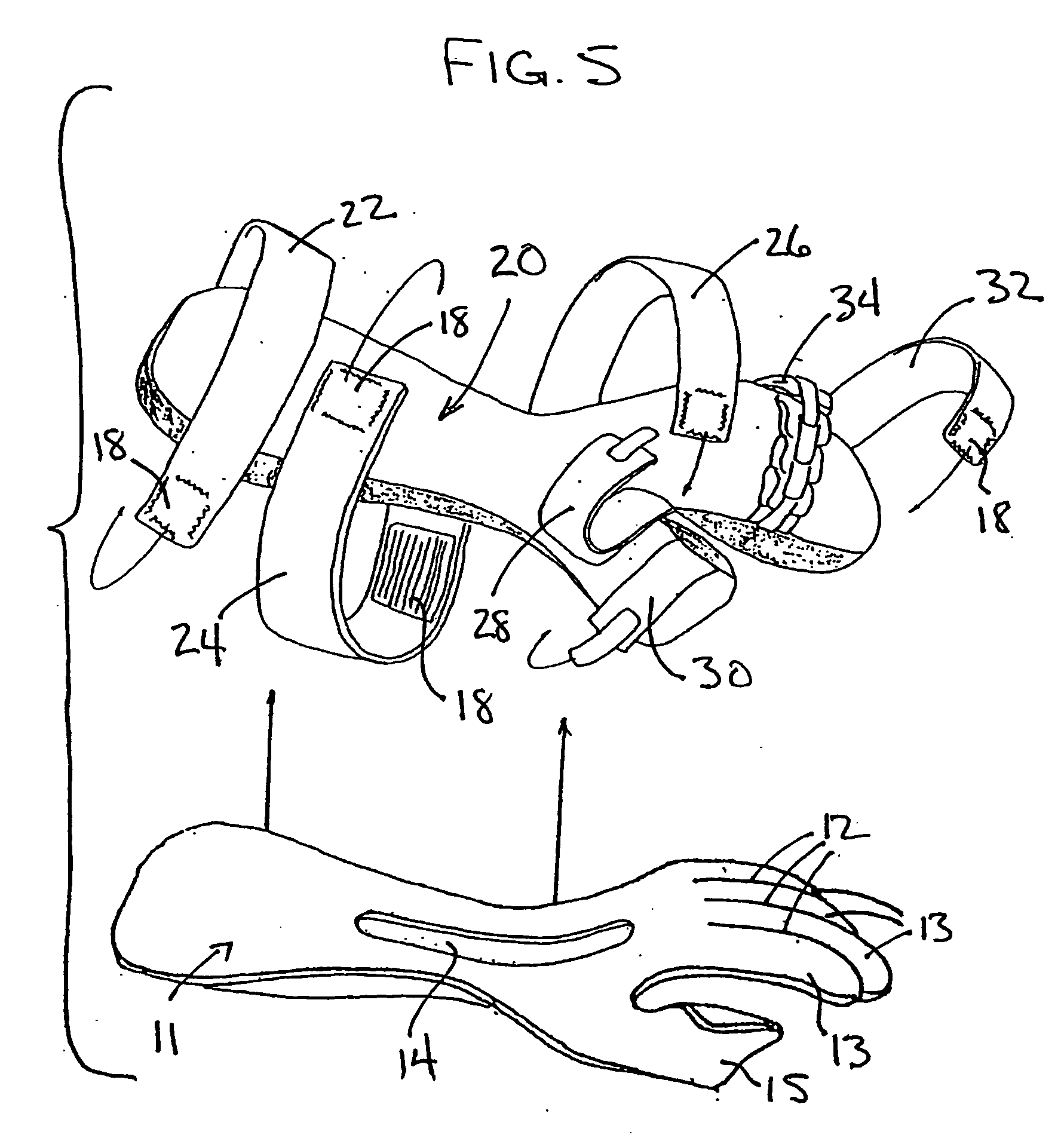Hand orthosis
a technology for hand and wrist, applied in the field of hand orthosis or splint, can solve the problems of increasing deformities and reducing the effect of treatment tim
- Summary
- Abstract
- Description
- Claims
- Application Information
AI Technical Summary
Benefits of technology
Problems solved by technology
Method used
Image
Examples
Embodiment Construction
[0044] With reference to FIGS. 1-10, various splints of the instant invention and the features of the splints are shown.
[0045]FIGS. 1 and 2 show side and top views of a first moldable thermoplastic insert 10 and FIGS. 3 and 4 show side and top views of a second moldable thermoplastic insert 11. These inserts 10 and 11 contain slits 12 between the fingers 13 and thumb 15 and also have a central opening 14, all of which make the insert more dynamically moldable to a desired shape. There are two thumb versions of this invention: The thumb 15 is an extension of the Kydex® plastic that is totally enclosed in padded material and may be molded to meet almost any degree of range of motion for correction. This version is desired when a secure base is required to address hyperextension of any joint of the thumb to be able to create the three-point leverage with the “rolls” just proximal to the hyperextended joints and the straps with elastic properties just distal to work the joint(s) toward...
PUM
 Login to View More
Login to View More Abstract
Description
Claims
Application Information
 Login to View More
Login to View More - R&D
- Intellectual Property
- Life Sciences
- Materials
- Tech Scout
- Unparalleled Data Quality
- Higher Quality Content
- 60% Fewer Hallucinations
Browse by: Latest US Patents, China's latest patents, Technical Efficacy Thesaurus, Application Domain, Technology Topic, Popular Technical Reports.
© 2025 PatSnap. All rights reserved.Legal|Privacy policy|Modern Slavery Act Transparency Statement|Sitemap|About US| Contact US: help@patsnap.com



